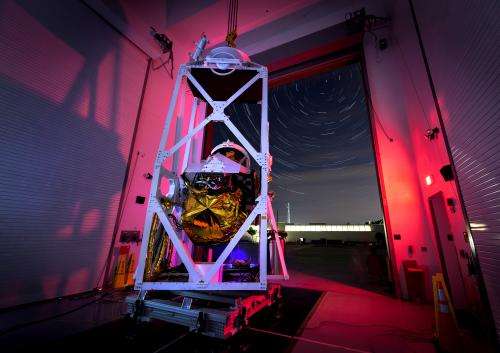Image: Looking for comets in a sea of stars

On a July night this summer, a 5,200-pound balloon gondola hangs from a crane and moves toward the open doors of a building at the Johns Hopkins University Applied Physics Lab in Laurel, Md. The telescopes and instruments carried by the gondola, which are part of NASA's Balloon Observation Platform for Planetary Science (BOPPS), are calibrated by taking a long look at the stars and other objects in the sky.
This photo was created from 100 separate 30-second-exposure photos, composited together to make the star trail that "spins" around Polaris, the North Star.
BOPPS is a high-altitude, stratospheric balloon mission, which will spend up to 24 hours aloft to study a number of objects in our solar system, including an Oort cloud comet. Two comets that may be visible during the flight include Pan STARRS and Siding Spring, which will pass very close to Mars on Oct. 19. The mission may also survey a potential array of other targets including asteroids Ceres and Vesta, Earth's moon, and Neptune and Uranus. BOPPS is scheduled to launch on Sept. 25 from the NASA Columbia Scientific Balloon Research Facility in Fort Sumner, New Mexico.
Provided by NASA




















